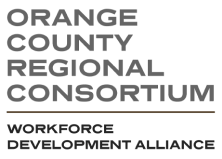The Capistrano Unified, Laguna Beach Unified, and College and Career Advantage consortium has identified a critical need to modernize and expand Advanced Manufacturing education across its high schools and middle schools to meet the rapidly growing workforce demands in Orange and Los Angeles counties. With approximately 150,000 middle-skill manufacturing jobs projected by 2025, and current high school labs outdated and insufficient, the consortium aims to bridge the gap between student training and industry needs—particularly for underserved populations. While local community colleges like Saddleback have modern mechatronics labs, high schools are struggling to keep pace with the technology required to prepare students for these pathways. This initiative will use K12 SWP funds to upgrade equipment in 30 high school and 15 middle school classrooms, expand CTE access, and create early exposure and hands-on training opportunities. By increasing student enrollment in CTE manufacturing pathways from 700 to 1,300, strengthening industry partnerships, and aligning curriculum with college and career outcomes, the project seeks to provide equitable access to high-wage, high-skill careers in manufacturing and related sectors.
To strengthen the pipeline from middle school through community college in the Advanced Manufacturing sector, the Capistrano and Laguna Beach Unified School Districts, in partnership with College and Career Advantage, are implementing a comprehensive K12 SWP-funded work plan focused on curriculum alignment, postsecondary transition, and work-based learning. The initiative emphasizes upgrading lab facilities, developing industry-informed curriculum with community college and employer input, and increasing hands-on training opportunities. Key strategies include annual networking meetings for educators, counselor “road trips” to observe CTE labs, middle school student field trips, and targeted guidance to boost enrollment in high school manufacturing pathways and postsecondary programs. The plan aims to increase high school manufacturing enrollment from 700 to 1,300 students, enhance transition rates to college programs, and ultimately prepare more students—especially those from underserved backgrounds—for high-wage, high-skill careers in the region’s rapidly evolving manufacturing industry.
ENGINEERING AND ARCHITECTURE SECTOR (ENG) (CDE)
HEALTH SCIENCE AND MEDICAL TECHNOLOGY SECTOR (HLT) (CDE)
MANUFACTURING AND PRODUCT DEVELOPMENT SECTOR (MAN) (CDE)
TRANSPORTATION SECTOR (TRA) (CDE)




